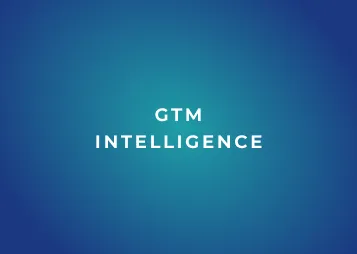I’ve spent over 10 years working in sales and revenue teams.
In that time, one of the most frustrating issues that comes up again and again is sales pipeline leakage.
And it’s an incredibly tricky issue to recognize and quantify. Over the years, I have realized this is partly because of our tendency to focus on the things that are easiest to see.
For example, it's easy to see which lead currently in the pipeline is the highest value, it's easy to see which stage they’re at and focus on getting them over the line.
But there is so much that we don’t look at and think about every day because it's not the most obvious thing in front of us. Each of these unseen things has a risk attached and the possibility for human error or oversight to ignore them until it is too late.
In building Jiminny, we changed our sales process from one end-to-end sales rep per opportunity to multiple people across different stages. We were confident in this decision and still are, as it has many benefits. But it does create more chances of things going wrong through human error and handovers.
These are the steps we followed to safeguard our pipeline and reduce pipeline leakage, so you can apply it to your own sales process.
Step 1: Draw the map
Map out your route to close.
That’s every step a buyer would go through from entry into the funnel to reaching a decision. This needs to be detailed, so it should include every eventuality at each step. To help, think about it from your perspective, but also the prospect's perspective. What does each stage look like for them?
If you're using sales pipeline management software in your pipeline reviews, you'll have a good basis for this. You can get more on your pipeline design in the piece I wrote here.
Step 2: Define the map
Your route to close will include different terminology to label where the prospect is in the journey.
You might use words or abbreviations like
MQL
SQL
Sales opportunity
Disco/demo - or other sales stage names
Make sure you have a clear definition for every label. Then make sure everyone across the organization is living and working by the same definitions.
If everyone is using different sales definitions then your data will be meaningless
Step 3: Identify ownership
Now you’ve got the route, overlay the areas of responsibility - which member of the team is accountable for what? And what tools are responsible for each task?
For example, BDRs might own the process up until the meeting is booked, then an AE owns it until handoff to Customer Success.
In terms of tools, list out what is required where eg Doucsign for contract management.
This might feel like making yourself more work, but trust me when I say it is an invaluable exercise.
Step 4: Identify danger zones
You should now be well-equipped to identify the danger zones in your process where pipeline leakage is most likely to occur.
In my experience, the riskiest spots will be where there is a handover of ownership so start there. Take each handover point and reconsider the process, people and tools involved.
Then look for your blindspots, are there any parts of the process where activity could be happening that are not as visible as they should be?
For example, we discovered one of our blind spots is during the period between lead entry and opportunity creation. In this period, multiple calls tend to happen, to determine if there is a sales opportunity. A necessary process, but all the while the lead is in limbo. They don’t know if they are a good match for you as a supplier and may well be in touch with competitors who are working to move the process along quicker than you. We made this a big focus for improvements to see how we could make this process quicker and more effective.
Finally in this step, think about re-entry into the pipeline, what’s your process for a lost opportunity? Is it sitting stagnant in a list? Or is there a process to work the prospect back into the pipeline? A lead falling out of the sales process isn’t the end of the journey and there is danger in not having the safety net of a nurturing cadence.
Step 5: Look for automation and optimization opportunities
There will be the need for multiple processes across the whole sales pipeline from routing a lead to the correct salesperson all the way through to winning or losing.
List all your processes out, especially the ones you need but don’t have. It doesn’t all need to be sorted overnight, but it will help create a list of processes to prioritize.
From what I’ve experienced across numerous businesses, the best chance of reducing pipeline leakage is to minimize the opportunity for human error as far as possible. In many cases, this means automation. I’m not saying replace your sales team with robots, but employ tools that will support and enhance their human touch.
Step 6: Create reports & leak alerts
If you’re anything like me, your time in sales will have taught you a thing or two about how to set up a good report. By now, no doubt, you’ll have numerous reports that run every day that you’re really proud of.
Slick, autonomous, visually appealing reports that you treat like you’re a proud parent. And rightfully so!
But it’s the less sexy reports that will focus you on the risky areas.
Make sure that your identified areas of risk are each accompanied by a report that will highlight progress or issues. And alerts to warn you about issues before it is too late.
Step 7: Document, iterate and evolve
Make sure that your sales process is a working document that can flex and evolve as required. The only constant is change so be willing to make evolutions - I can confidently say it’s the only way businesses survive.
Use this documentation each time you consider a change to your process to check if there is a broader impact on people, tech or processes that could create an unintended leak.
The more thorough and comprehensive your documentation, the better equipped you are to analyze and improve in the future.
We continue to go through these steps regularly to ensure we’re as efficient and water-tight as possible.
I hope it is helpful to you - please do get in touch and let me know your thoughts or how you get on applying it to your business.
Shelley Lavery is the CRO and Co-Founder of Jiminny, the leading conversation intelligence and sales coaching platform that helps companies maximize their revenue. With over a decade of experience in coaching B2B sales teams, Shelley was previously Group SVP of Sales at Reward Gateway now leading the conversation intelligence discussion with expertise and insight.





.webp)






